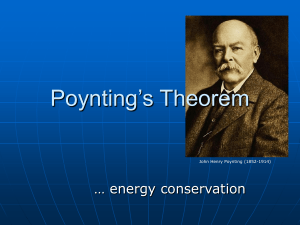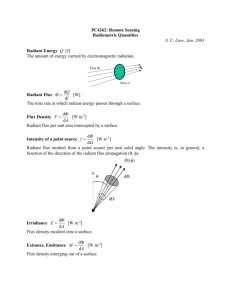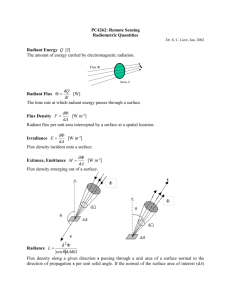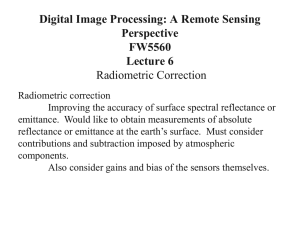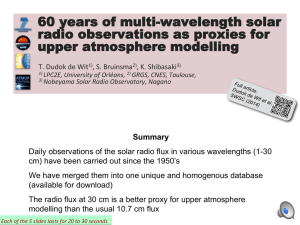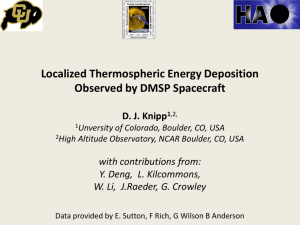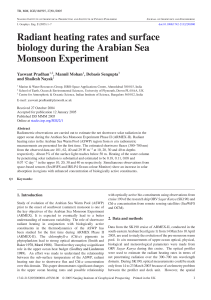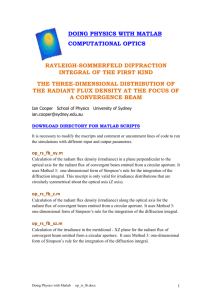op_irradiance - School of Physics
advertisement
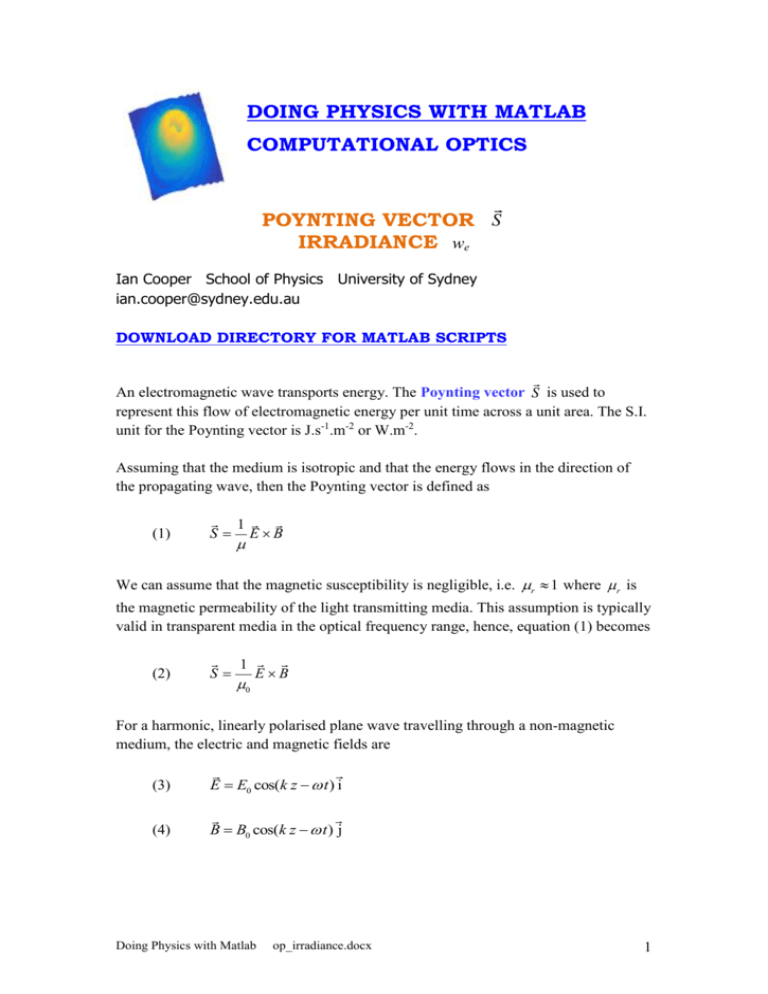
DOING PHYSICS WITH MATLAB COMPUTATIONAL OPTICS POYNTING VECTOR S IRRADIANCE we Ian Cooper School of Physics University of Sydney ian.cooper@sydney.edu.au DOWNLOAD DIRECTORY FOR MATLAB SCRIPTS An electromagnetic wave transports energy. The Poynting vector S is used to represent this flow of electromagnetic energy per unit time across a unit area. The S.I. unit for the Poynting vector is J.s-1.m-2 or W.m-2. Assuming that the medium is isotropic and that the energy flows in the direction of the propagating wave, then the Poynting vector is defined as (1) S 1 EB We can assume that the magnetic susceptibility is negligible, i.e. r 1 where r is the magnetic permeability of the light transmitting media. This assumption is typically valid in transparent media in the optical frequency range, hence, equation (1) becomes (2) S 1 0 EB For a harmonic, linearly polarised plane wave travelling through a non-magnetic medium, the electric and magnetic fields are (3) E E0 cos(k z t ) i (4) B B0 cos(k z t ) j Doing Physics with Matlab op_irradiance.docx 1 Also, we know that B0 E0 v v c n n v 2 r 0 r 0 v 2 1 r 0 r 0 r r r 0 0 0 0 c2 r 0 v 2 r 0 v 2 r 0 2 0 c2 0 n 1 where 0 is the permittivity of free space, 0 is the permeability of free space, c is the speed of light in vacuum, v is the speed of light in a medium with dielectric constant r , relative permittivity r 1 and n is the refractive index of the medium. Therefore, we can express the Poynting vector as (5) S 0 c 2 E0 B0 cos2 (k z t ) k n 0 c E0 2 cos2 (k z t ) k It is clear that the Poynting vector S oscillates from maxima to minima due to the cosine term squared. At optical frequencies, S is an extremely rapidly varying function of time (oscillation frequency twice that of the electric and magnetic fields). Hence, the instantaneous value of S would be an impractical quantity to measure. We need to measure the time-averaged value of the Poynting vector < S > and this quantity is often referred to as the irradiance we. A more general term for the flow of energy per unit area per unit time is called the intensity I. In optics, it is better to use the term irradiance rather than intensity. The time-average of the cosine squared term is ½, therefore, (6) we S n 0 c * E0 E0 2 where E0 * is the complex conjugate of the peak electric field E0 . The irradiance is always given in terms of the electric field since the electric field is considerably more effective at exerting forces and doing work on charges than the magnetic field. The irradiance is a measure of the “concentration of power”. Doing Physics with Matlab op_irradiance.docx 2 The time rate of flow of radiant energy is the power P or radiant flux WE where (7) P WE w e dA area If we divide the radiant flux incident upon or exiting from a surface by the area of the surface, we have the radiant flux density. This is often just called the flux density or energy density. Irradiance corresponds to the flux density incident upon a surface and the exitance as the flux density emitted from the surface. Instantaneous flow of electromagnetic energy per unit time per unit area Poynting vector S Time-averaged flow of electromagnetic energy per unit time per unit area irradiance intensity radiant flux density flux density energy flux density exitance <S> Time-average flow of electromagnetic energy per unit time power radiant flux flux energy flux Doing Physics with Matlab op_irradiance.docx W.m-2 J.s-1.m-2 W.m-2 we I W J.s-1 P WE 3
